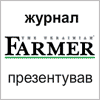Hogs Drop From 13-Year High on Speculator Sales; Cattle Fall
Hog futures fell from a 13-year high on signs that traders are making sales to lock in profit after prices surged 29 percent this year. Cattle also dropped.
U.S. farmers cut hog-breeding herds to the lowest level on record in a bid to halt more than two years of losses, limiting supplies available to meat processors and triggering the rally.
“We ran up to some new contract highs, but didn’t have enough energy to push through” as some investors booked profit, said Doug Harper, an analyst at Richard A. Brock & Associates, a broker in Milwaukee. “We seem to be in a holding pattern, even though the fundamentals still look solid. Product demand is still good, if not great.”
Hog futures for June settlement fell 0.525 cent, or 0.6 percent, to 84.95 cents a pound on the Chicago Mercantile Exchange. Earlier, the price reached 86.05 cents, the highest level for a most-active contract since April 1997.
Wholesale pork reached a 19-month high yesterday of 81.25 cents a pound and is up 58 percent since swine flu and the recession drove prices to a six-year low in August, U.S. Department of Agriculture data show. The U.S. hog breeding herd totaled 5.76 million sows on March 1, down 3.9 percent from a year earlier.
Cattle futures for June delivery dropped 0.525 cent, or 0.6 percent, to 92.95 cents a pound. The price is up 11 percent in the past year. Feeder-cattle futures for May settlement slipped 1.4 cents to $1.122 a pound.
Wholesale choice beef fell 0.2 percent at midday to $1.6664 a pound after yesterday reaching the highest level since July 2008, according to the USDA. High meat costs may be cutting demand, because “consumers are still really price sensitive,” said Chad Henderson, a market analyst at Prime Agricultural Consultants Inc. in Brookfield, Wisconsin.
Russian Trade
Earlier, hogs and cattle futures rose on speculation that Russia will resume imports of U.S. chicken, leaving less poultry meat available in the U.S. to compete with pork and beef.
Russia, once the largest importer of U.S. chicken, essentially barred the meat as of Jan. 1 by slashing the allowable amount of chlorine producers can use as a disinfectant. The trade dispute may be resolved “very soon,” James Sumner, the president of the USA Poultry & Egg Export Council, said yesterday.
“Now there’s just a sense of relief and one less thing for the markets to worry about,” Harper of Brock & Associates said.
Whitney McFerron
Source: Bloomberg
- 1834 reads







